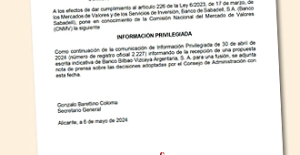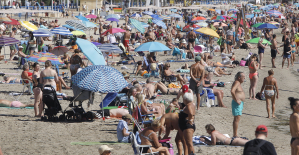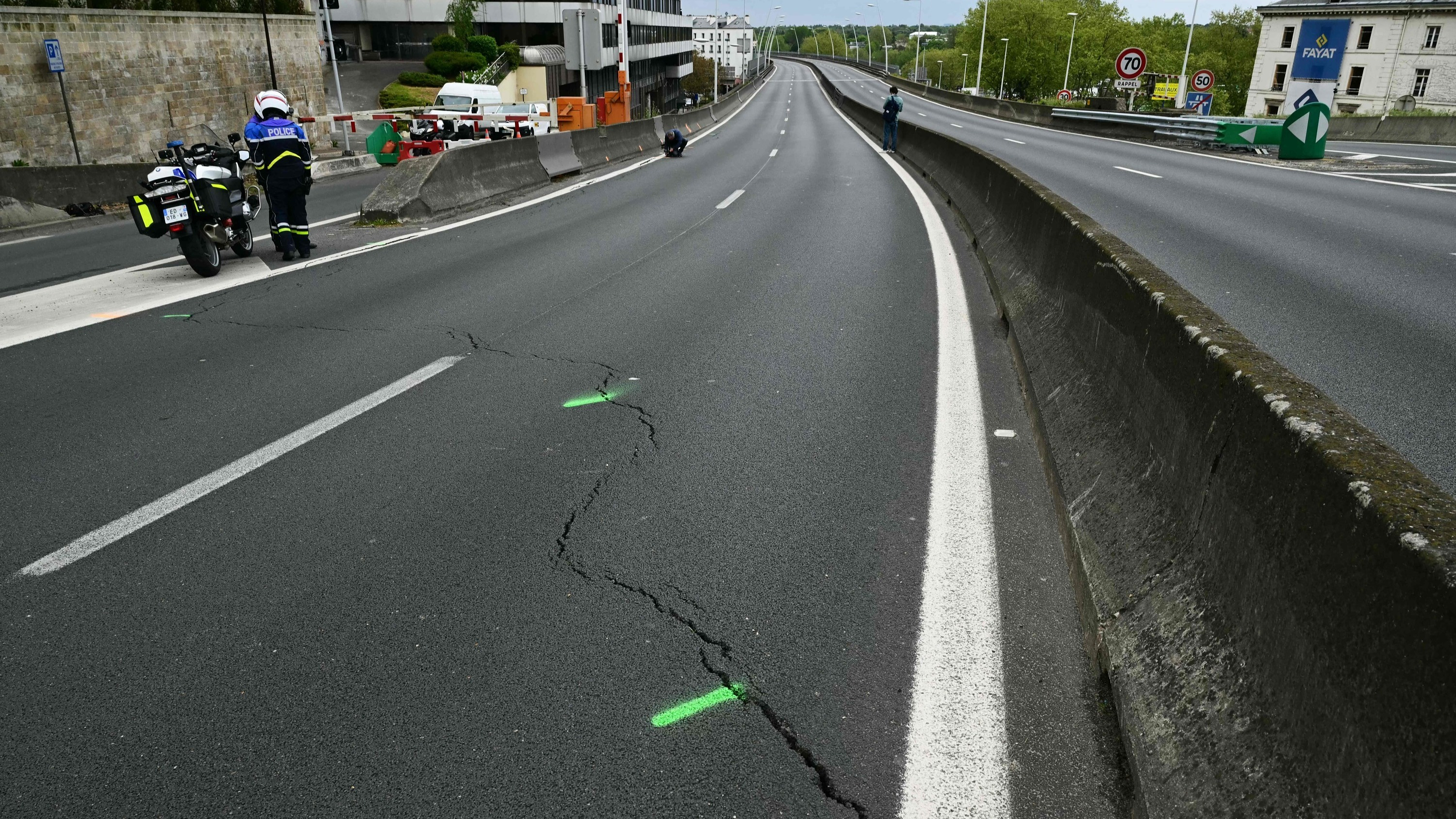Two millennia after its construction, no rough pothole has damaged the solid roadway of the Roman road. In Châteaugiron, in Ille-et-Vilaine, time has nevertheless done its work on the old road which linked the ancient city of Condate (Rennes) to Juliomagus (Angers). In recent months, this axis of circulation has been exhumed over several meters by researchers from the National Institute for Preventive Archaeological Research (Inrap), at a place called Grand Launay, south of the agglomeration.
As the archaeologists were able to realize, the way crosses from east to west the whole of the prescribed excavation area. Built in the 1st century AD, during the Gallo-Roman era, the road had been a victim of its own success, as evidenced by the many repairs to its central tread, the curved surface of the roadway. The technical side aisles and the various outbuildings that flanked this ancient axis were also exhumed by the researchers.
The new section of this axis completes the increasing data collected for several years on this ancient highway in northwestern Gaul. Several sections of the Roman road which ran from Rennes to Angers, over a hundred kilometers, are indeed already known thanks to archaeology. In Avrillié, on the northwestern outskirts of Angers, some portions of the road were thus found during two separate excavation operations, organized by Inrap in 2018 and then again this year, in the spring.
Fairly well studied, this axis of circulation did not wait for the conquest of Gaul by Julius Caesar to be developed. The route of the Roman road indeed follows the route of older paths, dated "from the Bronze Age or the beginning of the Iron Age" (that is to say around 1000 to 700 BC). -C.), according to a press release from Inrap. Nor did the use of this Roman road disappear with the end of Antiquity. The way “has persisted in the landscape for at least 1800 years, confided to Ouest France Frédéric Guérin, responsible for the last campaign of Avrillié, completed in May. It was used in the medieval period and during the modern period.
Led by archaeologist Sandra Sicard, the excavation carried out by Inrap in Châteaugiron has been studying a 40-hectare sector since September before its transformation into a housing estate. In addition to the Roman road, archaeologists have unearthed a Neolithic agricultural occupation dated to the Villeneuve-Saint-Germain culture, around 4600 BC. Of a type quite rare in Brittany, this protohistoric site was delimited by a ditch and dominated by a large house, 25 meters long. An important domestic presence dating from the Gallic period was also exhumed. The site will be open to the public for the European Archeology Days, from June 16 to 18.

 In Russia, Vladimir Putin stigmatizes “Western elites”
In Russia, Vladimir Putin stigmatizes “Western elites” Body warns BBVA that "the Government has the last word" in the takeover bid for Sabadell
Body warns BBVA that "the Government has the last word" in the takeover bid for Sabadell Finding yourself face to face with a man or a bear? The debate that shakes up social networks
Finding yourself face to face with a man or a bear? The debate that shakes up social networks Sabadell rejects the merger with BBVA and will fight to remain alone
Sabadell rejects the merger with BBVA and will fight to remain alone The presence of blood in the urine, a warning sign of bladder cancer
The presence of blood in the urine, a warning sign of bladder cancer A baby whose mother smoked during pregnancy will age more quickly
A baby whose mother smoked during pregnancy will age more quickly The euro zone economy grows in April at its best pace in almost a year but inflationary pressure increases
The euro zone economy grows in April at its best pace in almost a year but inflationary pressure increases Children born thanks to PMA do not have more cancers than others
Children born thanks to PMA do not have more cancers than others Apple alienates artists with the ad for its new iPad praising AI
Apple alienates artists with the ad for its new iPad praising AI Duration, compensation, entry into force... Emmanuel Macron specifies the contours of future birth leave
Duration, compensation, entry into force... Emmanuel Macron specifies the contours of future birth leave Argentina: the street once again raises its voice against President Javier Milei
Argentina: the street once again raises its voice against President Javier Milei Spain: BBVA bank announces a hostile takeover bid for its competitor Sabadell
Spain: BBVA bank announces a hostile takeover bid for its competitor Sabadell Berry affair: Jeane Manson victim of a heart problem after a court hearing
Berry affair: Jeane Manson victim of a heart problem after a court hearing Venice Film Festival: Isabelle Huppert will chair the jury of the 81st festival
Venice Film Festival: Isabelle Huppert will chair the jury of the 81st festival Louvre: Delacroix’s “Liberty Leading the People” target of the Riposte Alimentaire collective
Louvre: Delacroix’s “Liberty Leading the People” target of the Riposte Alimentaire collective The Coubertin Spirit, Eternal Memory, Planet of the Apes... Films to watch this week
The Coubertin Spirit, Eternal Memory, Planet of the Apes... Films to watch this week Omoda 7, another Chinese car that could be manufactured in Spain
Omoda 7, another Chinese car that could be manufactured in Spain BYD chooses CA Auto Bank as financial partner in Spain
BYD chooses CA Auto Bank as financial partner in Spain Tesla and Baidu sign key agreement to boost development of autonomous driving
Tesla and Baidu sign key agreement to boost development of autonomous driving Skoda Kodiaq 2024: a 'beast' plug-in hybrid SUV
Skoda Kodiaq 2024: a 'beast' plug-in hybrid SUV The home mortgage firm rises 3.8% in February and the average interest moderates to 3.33%
The home mortgage firm rises 3.8% in February and the average interest moderates to 3.33% This is how housing prices have changed in Spain in the last decade
This is how housing prices have changed in Spain in the last decade The home mortgage firm drops 10% in January and interest soars to 3.46%
The home mortgage firm drops 10% in January and interest soars to 3.46% The jewel of the Rocío de Nagüeles urbanization: a dream villa in Marbella
The jewel of the Rocío de Nagüeles urbanization: a dream villa in Marbella Institutions: senators want to restore the accumulation of mandates and put an end to the automatic presence of ex-presidents on the Constitutional Council
Institutions: senators want to restore the accumulation of mandates and put an end to the automatic presence of ex-presidents on the Constitutional Council Europeans: David Lisnard expresses his “essential and vital” support for François-Xavier Bellamy
Europeans: David Lisnard expresses his “essential and vital” support for François-Xavier Bellamy Facing Jordan Bardella, the popularity match turns to Gabriel Attal’s advantage
Facing Jordan Bardella, the popularity match turns to Gabriel Attal’s advantage Europeans: a senior official on the National Rally list
Europeans: a senior official on the National Rally list These French cities that will boycott the World Cup in Qatar
These French cities that will boycott the World Cup in Qatar Top 14: Josua Tuisova, the expected return of “The Animal”
Top 14: Josua Tuisova, the expected return of “The Animal” Tour of Italy: Alaphilippe beaten in the sprint by Pelayo Sanchez during the 6th stage of the Giro
Tour of Italy: Alaphilippe beaten in the sprint by Pelayo Sanchez during the 6th stage of the Giro Paris 2024 Olympic Games: in video, one of the survivors of the Marseille roundup carried the Olympic flame
Paris 2024 Olympic Games: in video, one of the survivors of the Marseille roundup carried the Olympic flame Table tennis: Félix Lebrun out in the quarterfinals in Jeddah
Table tennis: Félix Lebrun out in the quarterfinals in Jeddah


















